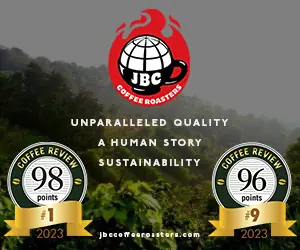In most places around the world coffee is harvested by hands. Quite often in marketing for coffee from various regions and farms they extol the virtues of selective hand harvesting. Everyone claims to only pick ripe red cherry. But how ripe? And how evenly ripe? The reality is most coffee is not harvested as ripe as it could be despite marketing claims.
Does the ripeness of the cherry matter? I think I and most coffee professionals would overwhelmingly say yes. Having done several experiments personally I have come to the conclusion it is unfortunately a very important prerequisite for excellent coffee. I say unfortunate because in most cases picking coffee at its peak of ripeness is no easy or cheap task.
The coffee bean is the seed of a fruit often called a cherry or berry. While this fruit is maturing the color is green until a few weeks before it is completely ripe. Then the color begins to change to yellow and gradually to a deep red almost purple color once the fruit is ripe (in most cultivars, there are some cultivars that are yellow and even orange when ripe) as the fruit becomes red it becomes very sweet and sweeter the riper it gets. The resulting coffee from the riper cherry seems to get sweeter as well. At some point as with all fruits it becomes over ripe begins to turn brown and the fruit begins to ferment. Tasting brown coffee cherries is a rather unpleasant experience. Very sour and vinegar-like and they have a rather unpleasant aroma. Not to surprisingly coffee produced from such cherry tends to be sour and sometimes unpleasant over-ripe/rotten in its flavor. Eventually the cherry will dry out looking almost black in color. Often these cherries have taken on mold in most climates and there is a high percentage of defective beans within them.
Obviously to produce the best coffee possible you want to pick the coffee while its red. Sounds easy enough right? If coffee all ripened at the same time it probably would be. Rarely though does that actually happen. Coffee tends to ripen in waves over a period of 2 or more months. Coffee pickers around the world are paid by weight of cherry NOT quality of cherry generally. Being selective and carefully inspecting each cherry you pick to be certain it is as ripe as it could be is time consuming. Which will result in less coffee being harvested and less money in a pickers pocket at the end of the day. It can also be difficult sometimes while picking to tell just how ripe the coffee cherry is especially in low light conditions. Sometimes the bottom half of a cherry is red but near the stem it is still green. The coffee will still ripen more but while picking it can be difficult to tell if the cherry is completely ripe without slowing down to inspect it. Also complicating things is the frequency of the picking. Every tree is not picked every day during the duration of the harvest season. Maybe once a week, once a month or even just once in a season some places. Quite often if coffee is partially ripe and not picked by the time that tree is picked again that fruit will already be over-ripe. And likely there is some cherry that was missed the previous round and is now brown or black. These can be hard not to pick as they are very loose on the tree and tend to fall of easily especially if they are in a cluster with ripe cherries being picked. At the very beginning of the season and the very end of the season the coffee is apt to be fairly inconsistently ripe in the field. Not surprisingly then the best quality coffees tend to come from the heart of the harvest when the coffee tends to be more evenly ripe on the trees.
Now exactly how much effort and expense is put into picking cherry as ripe as possible varies a lot around the world. Many places make virtually no attempt but rely on equipment after harvesting to try and remove undesirable coffee. In coffee that is being wet processed as occurs in most regions there is equipment available that is very good at removing completely green and very under-ripe and also completely black dried cherry pods. But there is a range from half-ripe to mostly brown cherry that equipment does not seem able to remove.
Not all processing facilities have equipment that will do this kind of sorting. Another option is sorting by hand before processing the coffee. Of course this is laborious but quite effective. It would seem for at least large scale operations it would be possible to develop some sort of laser color sorter for incoming coffee cherry. Such technology is certainly used for different fruit crops but to my knowledge no one has yet applied this to coffee.
The simple reality is most coffee is not completely ripe picked. This does not mean that most coffee is not good. Sorting equipment is very effective at removing the worst of the coffee and what may have been pretty scary looking cherry of all shades and colors once well sorted may be a quite nice coffee. Although almost all truly excellent coffees I have had were undoubtedly very very ripe picked. Whether through laborious attention in harvesting, through hand sorting and perhaps with some just the luck of having a great round of picking where almost all the cherry was evenly ripe. When coffee is truly ripe-picked (and very well processed, stored and roasted) it tends to manifest itself in the cup with a clean tea-like clarity and mild sweetness that is reminiscent of brown sugar, honey or raw sugar cane juice. All flavors I would think most people would greatly enjoy.










